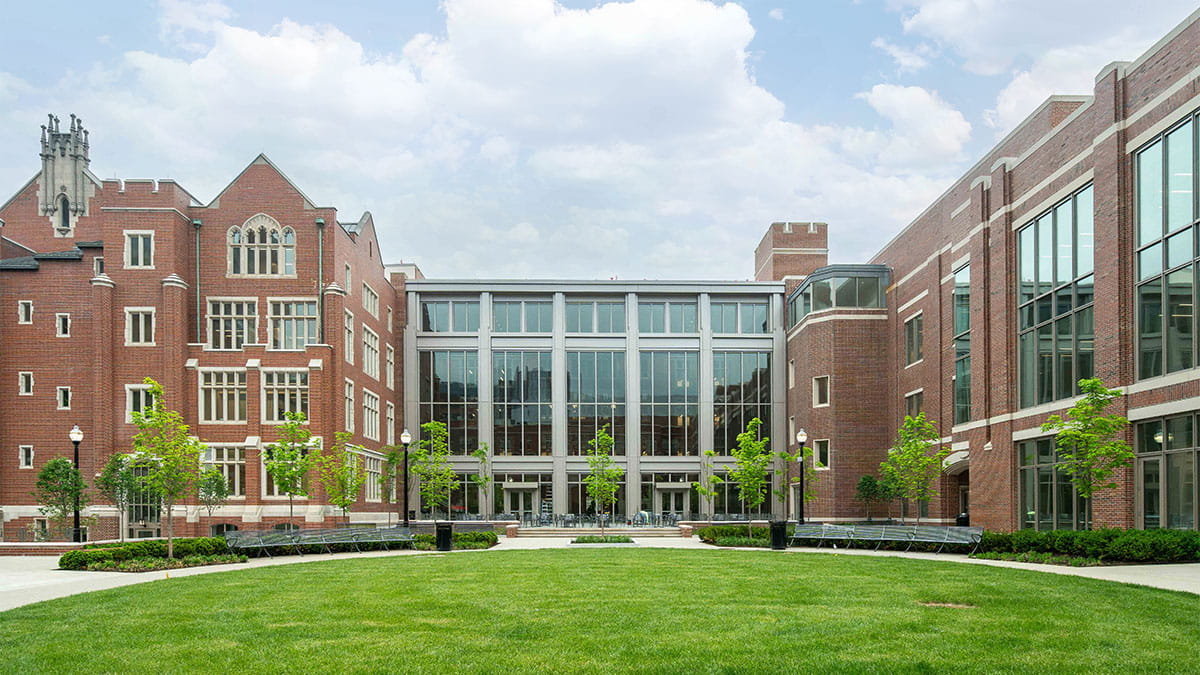College of Medicine recognized as top-tier medical school for research by U.S. News & World Report
 According to the 2024-25 U.S. News & World Report Best Medical Schools list, The Ohio State University College of Medicine is among the top 16 medical schools for research in the United States.
According to the 2024-25 U.S. News & World Report Best Medical Schools list, The Ohio State University College of Medicine is among the top 16 medical schools for research in the United States.This year, U.S. News & World Report created four evaluative tiers to rate medical schools in lieu of the traditional ordinal number ranking system. Tier 1 includes the highest-performing medical schools while Tier 4 includes the lowest. The Ohio State College of Medicine is in Tier 1 for research and Tier 2 for primary care.
A rise in research funding, including National Institutes of Health (NIH) funding, contributed to the U.S. News results and continues to spur foundational research programs across scientific disciplines at Ohio State. The College of Medicine finished a record year for research for fiscal year 2024. Total research awards totaled $477.3 million. Awards from the National Institutes of Health/Health and Human Services also increased to $245.2 million. These totals exceeded the college’s target FY24 goals by 19% and 22%, respectively.
Carol R. Bradford, MD, MS, FACS, dean of the College of Medicine, credits our inclusion in the top tiers of the U.S. News results to the university’s commitment to translational science in academic medicine as well as our drive to improve infrastructure, technological advances and leading-edge education.
“We are uniquely positioned for collaboration and team science,” says Dr. Bradford. “This is in part because of our sharp vision for the future of health care and the drive to improve lives in the state, the nation and the world.”
This recognition demonstrates the college’s relentless dedication to improvement and discovery — and to developing the next generation of physician leaders who will be able to provide timely solutions to evolving health care challenges.
Education
The Ohio State College of Medicine community – which includes 5,000 learners, more than 4,000 staff members and over 2,700 faculty – now has access to one of the most exceptional medical education facilities in the country.Completed in the spring of 2024, the 225,000-square-foot Interdisciplinary Health Sciences Center (IHSC) is the college’s new home. It provides cutting-edge, flexible facilities that are creating a collaborative campus for interprofessional education across the health sciences and strengthening the interdisciplinary curriculum at Ohio State.
“The IHSC provides the modern tools, technology and state-of-the-art environments required to teach future health care leaders how to practice 21st-century medicine,” Dr. Bradford says. “As an innovative health care education facility, it is designed to ensure our learners, researchers and practitioners continue to lead scientific discoveries that will benefit communities and patients everywhere.”
Another critical enhancement at the college was the creation of the Community Medicine MD Track, which enables learners to follow their passion of caring for patients in rural and smaller communities. This new MD program leverages the innovative medical education provided by the Ohio State College of Medicine and the community care expertise at Bon Secours Mercy Health to teach the next generation of physicians who want to practice medicine in a community-based setting. The Community Medicine MD Track not only addresses the clinical issues relevant to caring for patients, but also the expanding health care needs of the state.
Research
While much of the work taking place at the college focuses on translational science, some of the best scientists in the world continue to explore key foundational areas. The college’s total research funding grew to $477.3 million during FY24, bolstered by multimillion-dollar grants to study traumatic brain injury, gene therapy and maternal and pediatric medication safety.Meanwhile, awards from the National Institutes of Health increased to $245.2 million in the past fiscal year. Considering the NIH invests most of its appropriations in research that has the potential to enhance lives and reduce illness and disability, the clinicians, scientists and learners at Ohio State are truly part of an ecosystem of team science.
Clinical and community care
In the past fiscal year, The Ohio State University Wexner Medical Center and College of Medicine, in collaboration with several Ohio universities, also launched SOAR, a first-ever, multi-generational study that will uncover the biological, psychological and social patterns related to mental health. Led by clinicians and researchers at Ohio State, the $20 million landmark study will help researchers identify the root cause of mental illness and learn how to build resilience and reduce the risk of suicide and drug overdose.Another tremendous offering for community care is the Ohio State Wexner Medical Center’s Healthy Community Center, which opened in May 2024 in a remodeled former library on the east side of Columbus. In the center, experts in culinary-based and health, wellness and fitness programming provide community residents dietary and exercise workshops, health screenings and other educational health offerings related to diabetes, cancer, heart disease and obesity.
Commitment to continued expansion
Ohio State has committed to lead the state of Ohio in health care expansion with a $3 billion capital investment in education, research and patient care. To transform the way clinical care is taught, advanced and delivered, additional efforts include an 820-bed inpatient tower, new outpatient care centers and the Pelotonia Research Center, which is one of the most advanced research facilities in the world.All of these efforts equip the researchers, leaders and learners at the Ohio State College of Medicine with the spaces, technologies and resources they need to connect with others across disciplines, accelerate new discoveries and transform the lives of people in Ohio and beyond.
